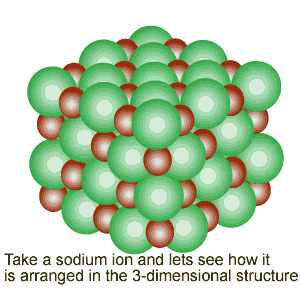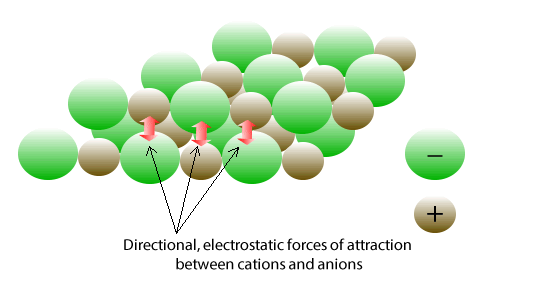The crystal is held together very strongly by directional, electrostatic forces of attraction, as positive and negative ions attract each other. The ions simply vibrate in the solid state and flow freely when heat is applied to melt the crystal. As seen on the right, the ions are packed tightly in the crystal by electrostatic forces and each ion is surrounded by 6 (as in the case of NaCl) other ions of opposite charge.

Click to see an animation of the electrolysis of molten sodium chloride.

The fact that directional, electrostatic forces act in very specific directions in the crystal lattice makes ionic compounds very brittle. When a force (hammer) is applied to the crystal the ions, which are aligned with opposite charged ions, are pushed out of alignment and now find themselves next to similar charged ions. Directional forces of repulsion result that results int he shattering of the crystal.
Click to see an animation
Most ionic compounds are soluble in water. In solution the charges are pulled apart by the disruptive nature of the water molecules. Water molecules, with their tiny charges, move amongst the ions and destroy the electrostatic attraction between them. Water molecules surround the ions and move about the solution freely. When in solution ionic compounds can conduct an electric current, for there are free moving ions.
Click to see an animation of the dissolving of ionic compounds. Notice how the water molecules orient themselves around the different ions.

